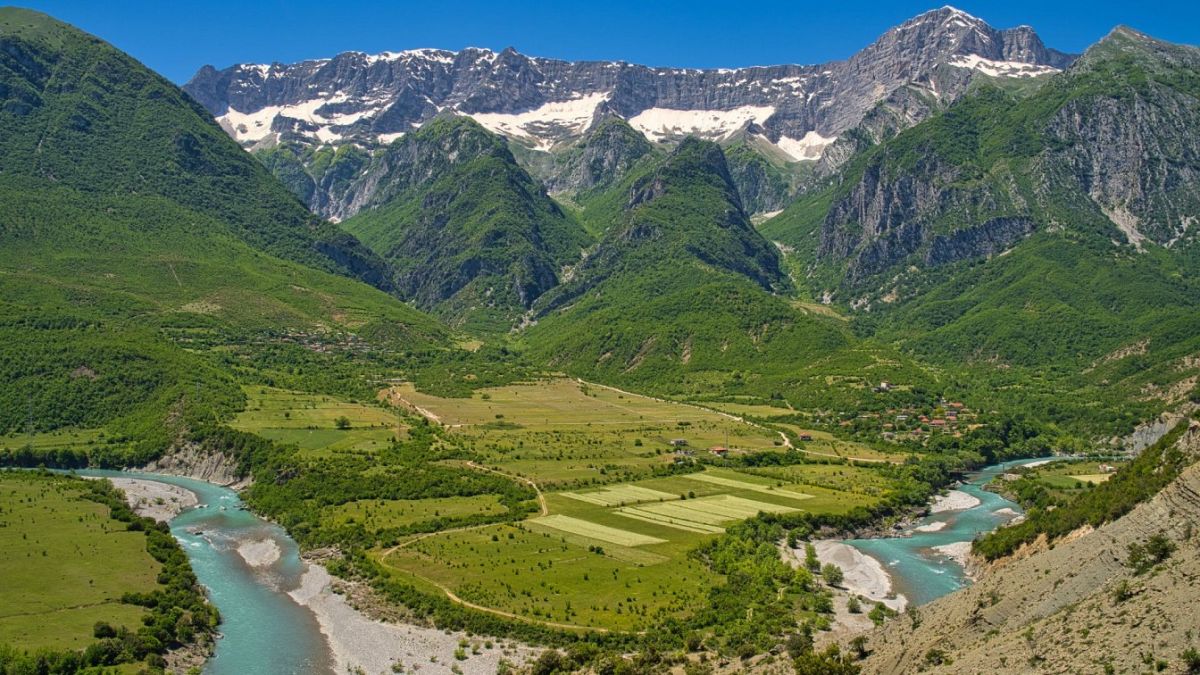The experts suggest making water more expensive as a way to cut use.
Only a third of Europe’s surface water bodies are in good health, according to a new report by the European Environment Agency (EEA).
Europe’s rivers, lakes and coastal waters – and the ecosystems they support – are “severely impacted by chemicals”, it warns. Air pollution from coal plants and pesticides from agriculture are two of the main culprits.
Climate change, water overuse and habitat degradation are also key threats.
Unless measures are taken to improve the resilience and sustainability of freshwater supplies, Europe could face serious challenges to water security. Already, 20 per cent of Europe’s territory and 30 per cent of the population are affected by water stress each year.
“The health of Europe’s waters is not good,” EEA executive director Leena Ylä-Mononen said in a statement. “Our waters face an unprecedented set of challenges that threatens Europe’s water security.”
‘Europe’s state of water 2024’ report, released today, also highlights the need for better flood risk management to protect lives, ecosystems and the economy.
Europe has missed deadlines to improve water quality
Under the EU’s Water Framework Directive, European rivers, lakes, transitional, coastal and groundwaters were supposed to achieve ‘good chemical status’ by 2015.
EEA reports that little progress has been made since 2010, with just 29 per cent of Europe’s surface water bodies achieving a good chemical status by 2021 – meaning they are not excessively polluted. Just 37 per cent achieved a good or high ecological status.
This is bad news for the continent’s aquatic habitats and the species that live in them.
Long-lived pollutants, such as mercury, are partly to blame for the slow progress on improvements: without them, 80 per cent of surface waters would achieve good status.
Member states have succeeded, however, in avoiding further deterioration by combating some chemical pollution, which has improved the outlook for some species including mussels and crustaceans.
Groundwater supplies, which provide two-thirds of Europe’s drinking water, fare slightly better with 77 per cent currently in good chemical status and 91 per cent showing good supplies in the 19 EU countries (and Norway) included in the report.
How is agriculture impacting Europe’s water quality?
Agriculture plays a key role in degrading both surface and groundwater supplies. This is due to the overuse of water and the release of excessive nutrients and pesticides into the soil, which then seep into water supplies.
Reducing water use and turning to more sustainable and organic farming processes could bring significant improvements – but would also require changes in consumers’ shopping and dietary habits.
Burning coal for energy – which releases mercury into the air – is another major source of contamination in surface water.
While no longer approved for use, brominated flame retardants are another long-lived pollutant that persists in surface water.
How can we save Europe’s water supplies?
The EEA report calls on member states to cut nutrient losses and the use of pesticides in half by 2030.
It also recommends the use of nature-based solutions to enhance water retention and ‘slow the flow’ of intense rain to combat flooding.
This could include removing dams and channels to support the free flow of rivers and restore natural habitats like wetlands and peatlands. As well as improving water quality, these ecosystems can store carbon and mitigate the impact of extreme weather.
As climate change continues to disrupt weather patterns and put pressure on water resources, Europe also urgently needs to adapt its water management practises, the report warns.
This should include reducing water use and improving water efficiency by combatting leakage, increasing water reuse, and using devices that lower consumption.
Better monitoring of water quantity and quality across the continent could help member states set and stick to water-saving targets.
The report also suggests that increasing the price of water could encourage more mindful use of the resource while funding investments in system improvements.
“We need to redouble our efforts to restore the health of our valued rivers, lakes, coastal waters, and other water bodies and to make sure this vital resource is resilient and secure for generations to come,” said Ylä-Mononen.

